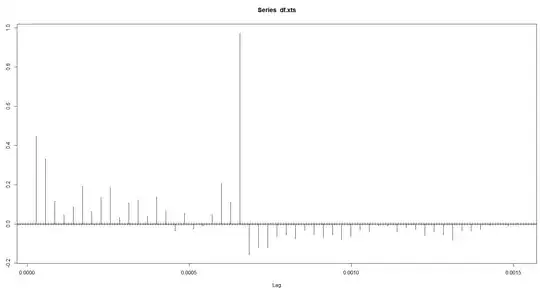Suppose I have a toy example for linear regression
set.seed(0)
n_data=50
true_coeff_b1=0.37
noise_ratio=0.13
conf_int_level=0.77
x=runif(n_data)
y=true_coeff_b1*x+noise_ratio*rnorm(n_data)
fit=lm(y~x-1)
summary(fit)
confint(fit)
Whats the relationship between Std. Error and Confidence Interval (as shown in red boxes in the figure?)
I remember from some book, they are different things, one is point estimation another is a random interval estimation (population parameter is fixed and unknown). But is there any relationship between them?
